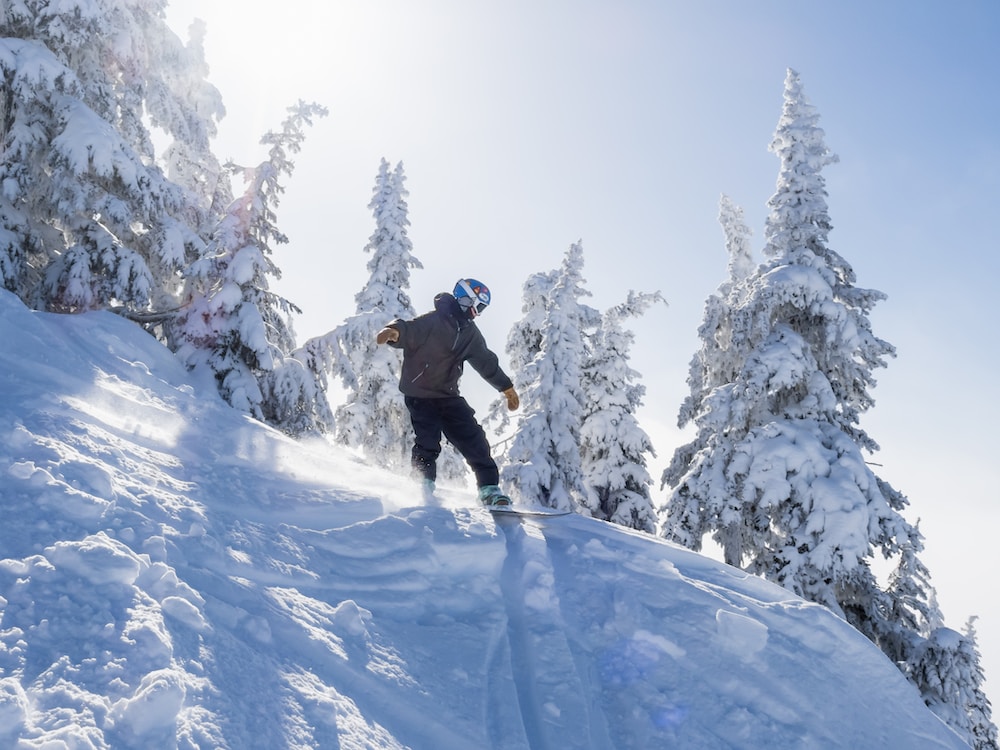Last Updated on September 22, 2023
As winter’s icy grip tightens its hold on the world, many outdoor enthusiasts eagerly prepare for the exhilarating joys of snow sports. Whether you’re a seasoned skier, a snowboarder looking for fresh powder, or someone who simply enjoys a winter hike, one essential piece of gear you can’t overlook is your snow goggles.
The right pair of snow goggles can make or break your winter adventure, ensuring clear vision, protection from harsh elements, and overall comfort. In this ultimate guide, we’ll explore the crucial factors to consider when choosing the perfect snow goggles for your winter escapades.
Lens Tint
The first and foremost consideration when selecting snow goggles is the lens tint. The lens tint affects your visibility in different lighting conditions, making it crucial to choose the right one for your specific winter activities. Here are some common lens tints and their best-suited conditions:
Comfort and Seal
The fit of your snow goggles is paramount for both comfort and functionality. Ill-fitting goggles can cause discomfort, hinder your vision, and let cold air and snow infiltrate.
a. Measure Your Face: Goggle manufacturers often provide size charts to help you find the right fit. Measure your face width and consult the chart to determine your goggle size.
b. Adjustable Straps: Look for goggles with adjustable straps to customize the fit to your head size and helmet if you wear one.
c. Foam Padding: Check the quality and thickness of the foam padding around the frame. Good padding ensures a snug and comfortable fit while helping to seal out cold air and moisture.
d. Ventilation: Adequate ventilation is crucial to prevent fogging (more on this later). Goggles with vents promote airflow, reducing the risk of condensation inside the lens.
e. Compatibility with Helmets: If you wear a helmet for safety, ensure that your goggles are compatible and can be comfortably worn with your helmet.
Anti-Fog Technology
Foggy lenses are the bane of any snow sports enthusiast. Reduced visibility not only poses safety risks but also detracts from the enjoyment of your winter adventure. To combat fogging, look for goggles with advanced anti-fog technology:
a. Double or Triple Layer Lenses: Many snow goggles feature double or even triple layer lenses that create a thermal barrier, reducing the chances of fogging.
b. Anti-Fog Coating: Some goggles come with anti-fog coatings on the inner lens surface. These coatings prevent moisture buildup, ensuring clear vision.
c. Ventilation: Goggles with strategically placed vents promote airflow, allowing moisture to escape and preventing fog from forming.
d. Fan-Powered Systems: For extreme conditions, consider goggles with fan-powered systems. These built-in fans continuously circulate air, virtually eliminating fogging.
Remember that even with the best anti-fog technology, it’s essential to maintain your goggles properly. Avoid touching the inner lens, as the oils from your fingers can reduce the effectiveness of anti-fog coatings. Additionally, ensure your goggles are clean and dry before each use.
UV Protection
Winter sun, combined with the reflective properties of snow, can be harsh on your eyes. UV protection is a crucial aspect of snow goggles, as it shields your eyes from harmful UV rays that can cause long-term damage. When choosing snow goggles, look for the following UV protection features:
a. 100% UV Protection: Ensure that your goggles offer 100% UV protection against both UVA and UVB rays. This protection is essential to safeguard your eyes from harmful radiation.
b. Polarized Lenses: Polarized lenses reduce glare from the sun and reflective surfaces like snow, ice, and water, providing added comfort and clarity.
c. Photochromic Lenses: Some goggles feature photochromic lenses that automatically adjust their tint based on the light conditions. These lenses adapt to changing environments, ensuring optimal visibility throughout the day.
Additional Features and Considerations
In addition to the key factors mentioned above, here are some extra features and considerations to keep in mind when choosing your snow goggles:
a. Peripheral Vision: Opt for goggles with a wide field of view to maximize your peripheral vision, allowing you to see obstacles and fellow skiers or snowboarders better.
b. Helmet Compatibility: Ensure your goggles are compatible with your helmet for a seamless and comfortable fit.
c. Lens Swap Systems: Goggles with easy-to-use lens swap systems make it convenient to change lenses on the go to adapt to changing light conditions.
d. Frame Design: Frameless or semi-frameless designs can provide a sleeker look and less obstructed vision compared to traditional framed goggles.
e. Durability: Look for goggles with durable frames and scratch-resistant lenses to ensure they withstand the rigors of winter sports.
Lens Shape and Curvature

The shape and curvature of your snow goggle lenses can significantly impact your vision and overall comfort. Spherical lenses, which mimic the shape of the eye, offer less distortion and better peripheral vision compared to flat lenses. They also reduce glare by reducing the angles at which light enters the lens.
On the other hand, cylindrical lenses have a flatter profile and are often more affordable, but they may have slightly more distortion. Choose the lens shape that best suits your preference and budget, but keep in mind that spherical lenses are often favored for their superior performance.
Lens VLT
The Visible Light Transmission (VLT) rating of your goggle lenses indicates the amount of light that passes through them. Lenses with a lower VLT percentage are darker and more suitable for bright, sunny days, while higher VLT lenses are better for low-light conditions.
Some goggles come with interchangeable lenses, allowing you to swap them out to match the specific lighting conditions on any given day. This adaptability can be a game-changer, especially if you frequently ski or snowboard in varying weather conditions.
Brand and Reputation
When investing in snow goggles, it’s often wise to choose a reputable brand with a history of producing high-quality eyewear. Established brands are more likely to incorporate the latest technology and materials into their goggles, ensuring durability and performance. Additionally, well-known brands usually offer a range of styles and models, allowing you to find the perfect pair that suits your preferences and budget.
Price Range
Snow goggles come in a wide range of prices, from budget-friendly options to high-end models. While it can be tempting to save money, it’s essential to strike a balance between your budget and the quality of the goggles.
Investing in a mid-range or higher-priced pair can often lead to better optics, durability, and comfort, ultimately enhancing your winter adventures. Remember that your snow goggles are a long-term investment in your eye health and enjoyment on the slopes.
Maintenance and Care
Lastly, proper maintenance and care can significantly extend the lifespan of your snow goggles. Always store them in a protective pouch or case when not in use to prevent scratches on the lenses. Avoid wiping the inner lens surface, as it can damage anti-fog coatings.
Instead, gently pat any moisture away with a microfiber cloth. Regularly clean your goggles to remove dirt, sweat, and sunscreen residue, which can degrade lens coatings. By taking good care of your snow goggles, you ensure that they continue to perform at their best, season after season.
Conclusion
Selecting the right snow goggles involves careful consideration of various factors, from lens tint and fit to anti-fog technology and UV protection. Each element plays a crucial role in enhancing your vision, comfort, and safety during winter adventures. As you embark on your snowy escapades, make an informed choice to ensure that your snow goggles become your trusted companion, helping you see the world in all its snowy glory while safeguarding your eyes from the elements.
When searching for where to buy snow goggles, consider visiting your local outdoor gear store, sporting goods shop, or ski resort pro shop, where knowledgeable staff can assist you in selecting the ideal goggles for your needs. Additionally, online retailers offer a wide range of options, allowing you to compare brands, features, and prices to make an informed decision from the comfort of your home.


